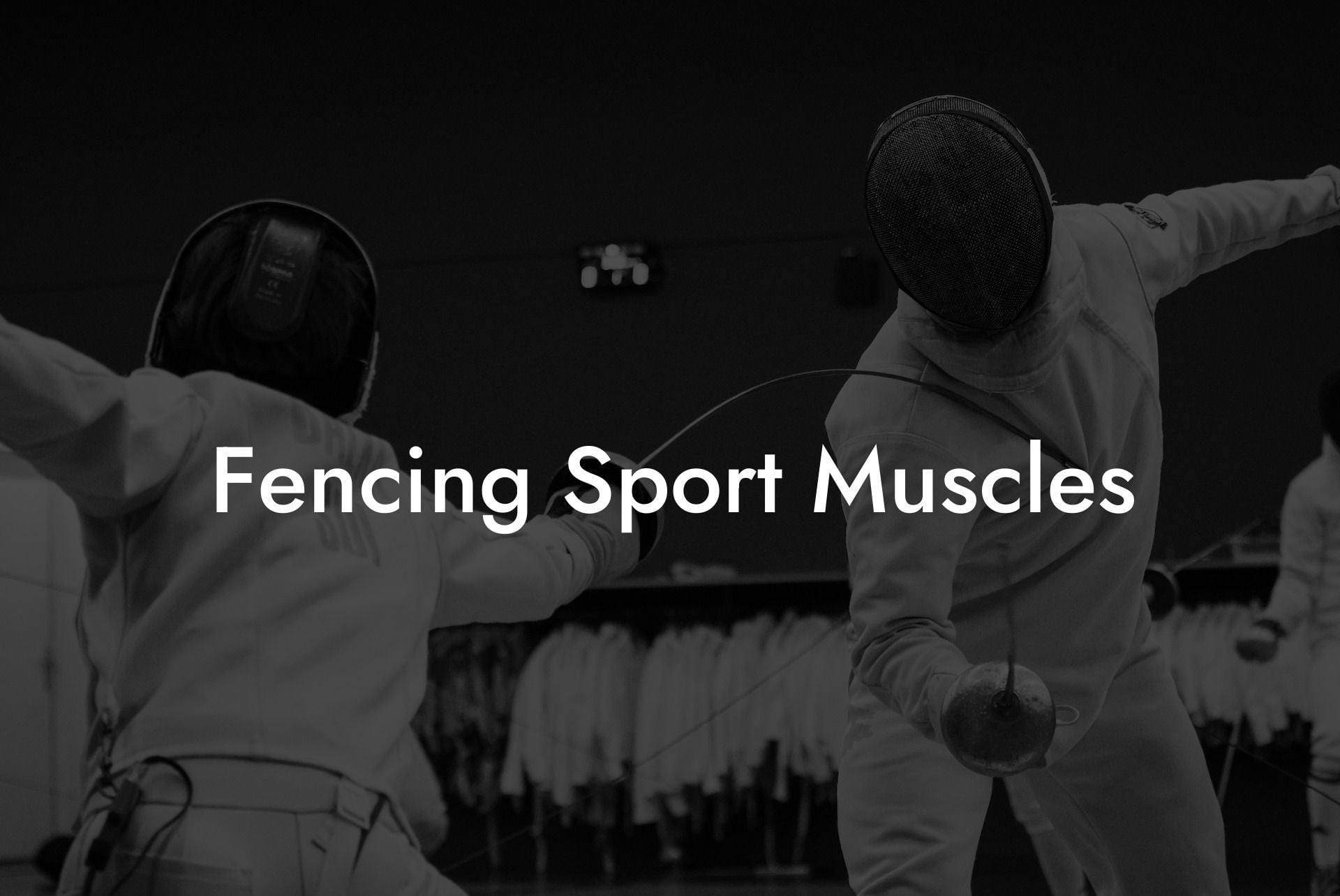Fencing is an exciting and exhilarating sport that not only challenges one's mind but also tests the physical limits of an individual. It requires incredible stamina, strength, and agility, as fencers need to move with precision and speed while maintaining balance and control. In this article, we will delve into the essential muscles utilized in fencing, and how developing these muscles can improve your performance on the piste.
Fencing Sport Muscles Table of Contents
The Primary Muscles Used in Fencing
Fencing is a full-body workout that engages multiple muscle groups across the upper and lower body. Some of the most significant muscles used in this sport include:
Quadriceps
These muscles, located at the front of your thigh, are responsible for extending the knee and play a vital role in lunging, which is an essential movement in fencing.
Hamstrings
Found at the back of your thigh, hamstrings are responsible for hip extension and knee flexion. They help maintain balance and stability during lunges and quick footwork movements.
Glutes
The gluteal muscles, comprising the gluteus maximus, medius, and minimus, are responsible for hip movement and stability. They are engaged in launching forward movements and helping fencers maintain an ideal en-garde position.
Gastrocnemius and Soleus
These calf muscles are responsible for plantar flexion, which propels the body forward during lunges, and allow fencers to make quick directional changes.
Core
The core muscles, including the rectus abdominis, obliques, and transverse abdominis, play a pivotal role in maintaining balance and stability in the en-garde stance and other fencing movements.
Deltoids
These shoulder muscles assist in arm abduction and extension, essential for executing a variety of fencing attacks and parries.
Forearms and Wrist Muscles
The forearm and wrist muscles play a crucial role in precise weapon manipulation, allowing for fluid, controlled movements during attacks and defensive actions.
Latissimus Dorsi and Rhomboids
These upper back muscles help in retracting and stabilizing the shoulder blades, promoting better posture and weapon control during matches.
Building Fencing-specific Muscles
Developing the muscles needed for fencing is crucial for improving performance and avoiding injuries. Some effective fencing-specific exercises include:
- Lunges: Forward and reverse lunges help develop the quadriceps, hamstrings, and glutes.
- Footwork Drills: Committing to various footwork drills helps improve the agility, speed, and strength of your lower body muscles.
- Planks and Core Exercises: Strengthening your core muscles through planks, Russian twists, and other core exercises helps maintain balance and stability while fencing.
- Resistance Band Work: Utilizing resistance bands for arm and shoulder exercises enhances the strength and flexibility required for precise weapon control.
- Upper Back Exercises: Incorporating exercises like pull-ups and rows into your routine helps to strengthen the latissimus dorsi and rhomboids, promoting better posture and stability.
Fencing Sport Muscles Example:
Imagine a fencing bout where two fencers with equal technical skills face off. The fencer with superior muscle development will have an advantage in terms of speed, strength, and stamina. This edge could result in faster lunges and more controlled weapon manipulation, ultimately leading to victory.
In conclusion, understanding and developing the key muscles used in fencing is essential for maximizing your performance on the piste. By incorporating targeted exercises into your training routine, you can elevate your skill set and become a more formidable opponent. If you found this guide helpful, please share it with your fellow fencers, and don't forget to explore other informative articles on our Anchorage Fencing Club blog to further enhance your knowledge about this captivating sport.













